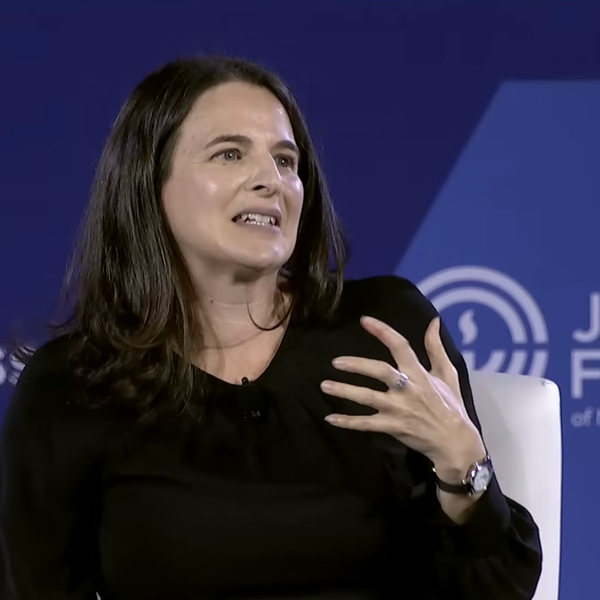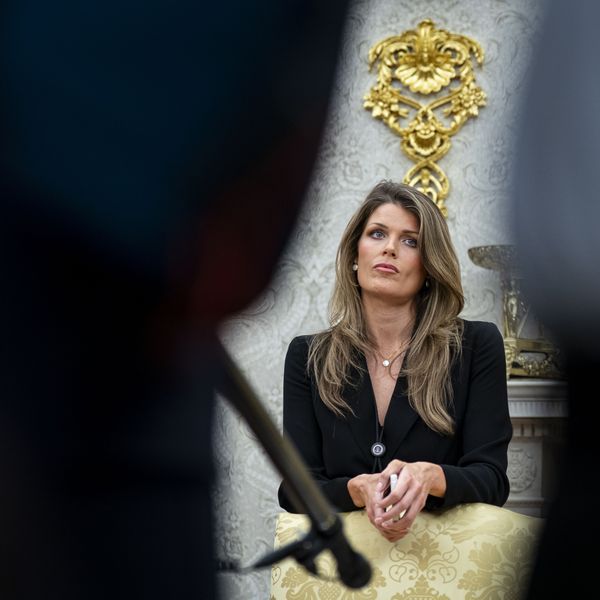Michiko Kodama was only seven years old when the world’s first nuclear weapon was dropped on her hometown of Hiroshima. Since then, she has dedicated her life to ensuring that her generation remains the only victims of a nuclear holocaust.
“When you witness something like this, you think how can I live? Am I allowed to live? But, I’m glad I’m alive,” Kodama said. “I’m glad I had the life I wanted, and I think it’s because I can tell the stories of those who have passed away.”
Kodama is the assistant secretary general of Nihon Hidankyo, an organization composed of Hibakusha, the Japanese word that refers to the survivors of the Hiroshima and Nagasaki bombings. In 2024, Nihon Hidankyo was awarded the Nobel Peace Prize for their advocacy work on nuclear nonproliferation.
“To fight against nuclear weapons is to preserve life because it is the weapon that is capable of completely destroying the entire Earth. It’s the weapon that’s capable of stopping time,” Kodama, 87, said.
“The atomic bombs that I experienced 80 years ago were like babies compared to today’s nuclear weapons,” said Kodama.
Eighty years have passed since the bombing of Hiroshima, when Kodama’s life and the world changed dramatically. She has not forgotten that day, but she said looking at today’s conflicts, it seems like the world has. And she’s determined to continue reminding the world of the terrors of nuclear weapons.
She remembers being under her desk as the bomb hit. She saw a flash of light followed by an extreme wave of heat. Somehow she survived along with her classmates. She recalled the horrific sight of people who had come to her families’ suburb to try and get relief from the epicenter. People who had been so badly burnt that their skin was coming off their flesh.
“These sorts of images show the differences between conventional weapons and nuclear weapons. It’s just a weapon that is so inhumane, so indiscriminate that we just should not have it,” Kodama said.
The Doomsday Clock, which the Bulletin of the Atomic Scientists created in 1947 to measure how close the world is to man-made catastrophe, signals that the world has moved closer to nuclear catastrophe than it ever has been. In January 2025, the clock was moved one second closer to midnight, sending a stark signal to the global community that we are moving closer toward the brink of nuclear holocaust. The clock currently looms at a mere 89 seconds to midnight.
“I fear that World War III will turn into a nuclear war,” she said.
Nine countries currently have nuclear weapons, and many more are seeking to get it as a deterrent.
“I think it’s a huge mistake,” Kodama said. “Nuclear weapons and humans, and of course the Earth, cannot coexist. I know this from personal experience.”
In June 2025, the US bombed Iran’s nuclear sites out of fear they were getting closer and closer to developing a nuclear weapon. Experts said that Iran’s aspirations will not stop and that other countries could follow its example
“In the span of two weeks, Iran was bombed by two nuclear powers, the US and Israel. That could lead to a perverted logic in which developing the nuclear bomb is seen as their only way to be safe from further attacks,” said Thomas Countryman, president of the board at the Arms Control Association.
Kodama warned that more countries with nuclear weapons would only increase the likelihood that a nuclear holocaust would take place.
Kodama described apocalyptic scenes from when the bomb first hit in the center of Hiroshima. People riding on Hiroshima’s famous tram instantly turned to charcoal; those that didn’t die instantly had their skin stripped off from the heat of the ground, and many ended up jumping in the river for relief where they also died.
Although she was one of the fortunate ones to survive the bombing, the consequences of the bomb continued well after August 6 for Kodama.
“I’ll be a victim of the atomic bomb until I die. Yes, I can’t escape the fact that I was a victim of the atomic bomb” Kodama said.
For example, Kodama recalled how she faced discrimination within Japan as a survivor and was told that would have to live alone without getting married because people at the time did not want their future generations “mixed” with those that survived an atomic bomb. Moreover, even after she married and had kids, her daughter suddenly died at 45 after contracting cancer, which Kodama believes was passed down from herself.
Her mother, father, and two brothers, one of whom was born after the bombing Hiroshima, also died of cancer which she attributed to the effects of radiation exposure.
However, even with the devastating effects of Hiroshima, Kodama warned that the bomb dropped 80 years ago would only cause a fraction of the damage that today’s weapons could inflict.
“The atomic bombs that I experienced 80 years ago were like babies compared to today’s nuclear weapons,” said Kodama.
In fact, just 20 days before the bomb exploded she moved from the center of Hiroshima to a suburb. Everyone in her former school was killed. Kodama noted that in some ways she was lucky because the Hiroshima bomb didn’t completely destroy life.
“When the atomic bomb fell on Hiroshima, it was said that no plants would grow for 80 years, but the following year, those trees in the garden sprouted young shoots,” Kodama said. “If something like that were to happen again, no plants would really grow. They wouldn’t grow for 80 years, or even a hundred years. It would be impossible to survive.”





